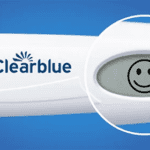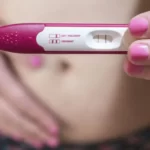
Are you trying to conceive and wondering how to differentiate between BBT chart pregnant vs not pregnant? Look no further! In this article, we will explore the intricacies of interpreting a BBT chart to determine whether you are pregnant or not. We will cover everything from the basics of BBT charting to understanding the key differences between pregnancy and non-pregnancy indicators. So, grab a cup of tea, sit back, and let’s dive into the world of BBT charting!
What is a BBT Chart?
A BBT chart is a graphical representation of a woman’s daily basal body temperature, typically measured orally or vaginally upon waking up in the morning. The BBT chart allows women to track their temperature fluctuations throughout their menstrual cycle. By charting these temperatures, patterns can emerge, providing insights into ovulation and potential pregnancy.
How to Create a BBT Chart
Creating a BBT chart is simple and requires only a few essential tools. Here’s a step-by-step guide to get you started:
- Purchase a BBT Thermometer: Invest in a specialized BBT thermometer that provides accurate readings to at least two decimal places. These thermometers are designed specifically for tracking BBT and are more sensitive than regular thermometers.
- Choose a Charting Method: There are various methods for charting BBT, including paper charts, smartphone apps, or online platforms. Select a method that suits your preference and lifestyle. Remember to choose a method that allows you to record your temperature consistently.
- Start Charting: Begin recording your BBT every morning before getting out of bed. Make sure to take your temperature at the same time each day for accurate readings. Record the temperature on your chosen charting tool.
- Record Additional Data: Alongside your BBT, consider recording additional data such as cervical mucus consistency, menstrual flow, or any other relevant observations. This information can provide further insights into your fertility patterns.
Now that you know how to create a BBT chart, let’s explore how it can help you determine whether you’re pregnant or not.
BBT Chart Pregnant vs Not Pregnant: Key Differences
Understanding the differences in BBT chart patterns between pregnancy and non-pregnancy is crucial for accurate interpretation. Here are the key indicators to consider:
1. Rise in Basal Body Temperature
During a menstrual cycle, a woman’s BBT typically follows a specific pattern. In non-pregnant cycles, the BBT remains relatively stable throughout the cycle, with slight fluctuations. However, in early pregnancy, the BBT rises and stays elevated for an extended period.
2. Sustained High Temperatures
One of the primary indicators of pregnancy on a BBT chart is the presence of sustained high temperatures. If your BBT remains elevated for at least 18 consecutive days after ovulation, it could be a sign of pregnancy. This sustained elevation is known as a BBT triphasic pattern and is considered a positive pregnancy indicator.
3. Implantation Dip
Around 7 to 10 days after ovulation, some women may experience a temporary drop in their BBT, known as an implantation dip. This dip occurs when the fertilized egg implants itself into the uterine lining. While not all pregnant women experience this dip, it can be a potential sign of early pregnancy when observed in conjunction with other indicators.
4. Lack of Menstruation
If you’ve been tracking your BBT and notice that your temperature remains elevated beyond your typical luteal phase length and you haven’t experienced menstruation, it could be a strong indication of pregnancy. However, it’s important to note that other factors, such as hormonal imbalances or stress, can also cause a delayed or missed period, so it’s essential to consider multiple factors when determining pregnancy.
5. Consistency of High Temperatures
In non-pregnant cycles, the elevated temperatures observed after ovulation typically drop a day or two before menstruation begins. However, in a pregnancy cycle, the temperatures tend to remain consistently high. If you notice that your temperatures remain elevated without a subsequent drop, it may suggest a potential pregnancy.
6. Charting Beyond the Expected Menstrual Cycle Length
When using a BBT chart to identify pregnancy, it’s important to continue charting beyond your expected menstrual cycle length. If your temperatures continue to stay elevated, it could be an early sign of pregnancy. On the other hand, if your temperatures drop and menstruation begins as expected, it’s likely an indication of a non-pregnant cycle.
Now that we’ve explored the key differences in BBT chart patterns between pregnancy and non-pregnancy, let’s address some frequently asked questions to provide further clarity.
Conclusion
In conclusion, BBT charting can be a valuable tool for tracking fertility patterns and potentially determining pregnancy status. By understanding the key differences in BBT chart pregnant vs not pregnant, such as the rise in basal body temperature, sustained high temperatures, implantation dip, lack of menstruation, consistency of high temperatures, and charting beyond the expected menstrual cycle length, you can gain insights into your fertility journey.
However, it’s important to remember that BBT charting alone is not definitive proof of pregnancy. It should be used in conjunction with other methods of confirmation, such as home pregnancy tests or consultations with healthcare professionals.
So, if you’re on the path to pregnancy and curious about whether you’re pregnant or not, grab your BBT thermometer, start charting, and use the knowledge and insights gained from your BBT chart to navigate your fertility journey.
Frequently Asked Questions (FAQs)
Can a BBT chart definitively confirm Pregnancy?
No, a BBT chart alone cannot definitively confirm pregnancy. While BBT charting can provide valuable insights, it’s essential to consider other signs and symptoms, such as missed periods, positive pregnancy tests, and physical changes in the body. Consulting with a healthcare professional is advised for an accurate pregnancy confirmation.
Are there any online tools or apps to help with BBT charting?
Yes, there are several online tools and smartphone apps available to assist with BBT charting. Some popular options include Fertility Friend, Kindara, and Glow. These tools often provide additional features, such as tracking cervical mucus and predicting ovulation, to enhance your fertility awareness.
Can stress affect BBT charting accuracy?
Yes, stress can potentially impact BBT charting accuracy. High levels of stress can disrupt hormone levels, leading to irregular temperature patterns. It’s important to manage stress and strive for consistency in your charting routine to obtain reliable results.
What are the other methods of confirming Pregnancy besides BBT charting?
In addition to BBT charting, other methods of confirming pregnancy include taking a home pregnancy test, visiting a healthcare professional for a blood test, or observing physical symptoms like breast tenderness, nausea, and frequent urination. These methods, combined with BBT charting, provide a more comprehensive understanding of pregnancy status.
Can medical conditions affect BBT charting?
Yes, certain medical conditions, such as thyroid disorders or polycystic ovary syndrome (PCOS), can impact BBT charting. These conditions can cause irregular temperature patterns and make it challenging to interpret the chart accurately. If you suspect any underlying medical conditions, it’s advisable to consult a healthcare professional.
Are there any precautions to take when charting BBT?
To ensure accurate BBT charting, it’s important to maintain consistency in the following aspects:
1. Take your temperature at the same time every morning.
2. Get a sufficient amount of sleep before taking your temperature.
3. Avoid excessive alcohol consumption or any activities that may affect your body temperature.
4. Record any additional observations, such as changes in cervical mucus or other relevant fertility signs.












